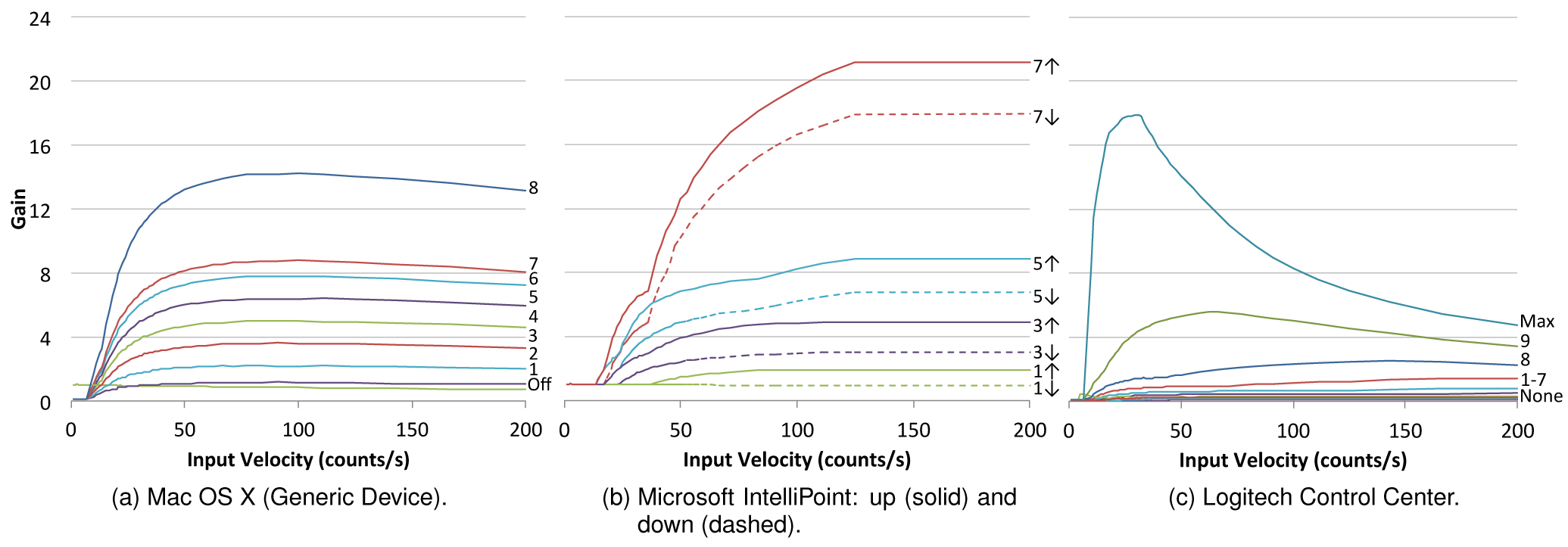Section: New Results
Transfer functions for scrolling tasks
Participants : Géry Casiez [correspondant] , Nicolas Roussel.
Scrolling is controlled through many forms of input devices, such as mouse wheels, trackpad gestures, arrow keys, and joysticks. Performance with these devices can be adjusted by introducing variable transfer functions to alter the range of expressible speed, precision, and sensitivity. However, existing transfer functions are typically "black boxes" bundled into proprietary operating systems and drivers. This presents three problems for researchers: (1) a lack of knowledge about the current state of the field; (2) a difficulty in replicating research that uses scrolling devices; and (3) a potential experimental confound when evaluating scrolling devices and techniques. These three problems are caused by gaps in researchers' knowledge about what device and movement factors are important for scrolling transfer functions, and about how existing devices and drivers use these factors (Figure 2 ). We fill these knowledge gaps with a framework of transfer function factors for scrolling, and a method for analysing proprietary transfer functions demonstrating how state of the art commercial devices accommodate some of the human control phenomena observed in prior studies [22] .
|



